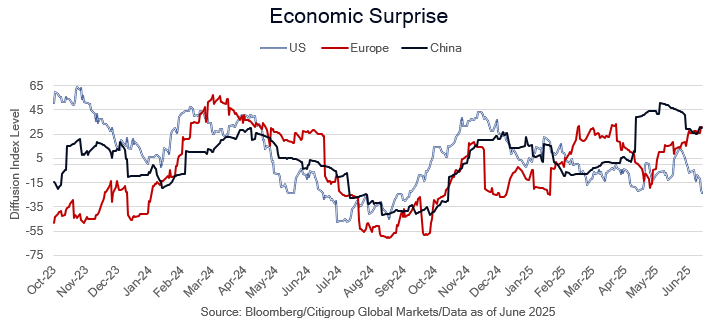Transitory Purgatory
Still detoxing, softer consumption, another leg lower for housing, weak demand for labor, a sharp drop in core earnings growth and a Fed in transitory purgatory
Still Detoxing
When we wrote Cleaning Up the Industrial Policy Mess on February 22, our core thesis was the transition from government spending driven growth to a recovery in private sector investment would take several quarters and would not leave the markets unscathed. While we expected the administration’s trade policy to contribute to the slowdown, like most strategists, we underestimated the size of the tariffs and the associated business confidence shock. As we’ve discussed at length, the markets essentially rejected the Administration’s aggressive approach by sending a very clear signal that the impact on growth was likely to be significantly greater than inflation. We turned positive on equities when the market dropped 22% because in our view a recession was fully priced, however, we never changed our view that growth would slow for several quarters. Because of the policy response, lower tariffs, at least for a time, the equity market recovery and the lags in economic activity and inflation data, our sense is that market participants have forgotten about the impact of the policy mosaic that Treasury Secretary Bessent coined a ‘detox from our addiction to government spending’, and we called cleaning up the industrial policy mess.
As we move into our third month since the Trump Trade Shock consumer spending at ~1/3 of the pace of 2H24, less than 1.5% by our estimate, government spending was -0.7% in 1Q25 after averaging 4.1% in 2H24, and although there was a spike in information processing equipment investment in 1Q25, most likely to front run higher tariffs, structures and intellectual property products investment continued their weakening trends during the Biden Administration’s industrial policy regime. The slump in residential investment is deepening as evidenced by last week’s June Homebuilder Survey and decidedly weak May housing starts report. We do not share the FOMC’s view the labor market is ‘solid’, as we discussed in our note following the last employment report, Fiscal Food Fight, the Administration’s trade, immigration and spending policies appear to have slowed demand for labor, reduced the supply of labor, and slowed the 2H24 downtrend in wage growth. Finally, there is the beleaguered small business sector that continues to struggle with a high cost of capital and lack of credit availability due largely to the FOMC’s asymmetric easing, primarily using their balance sheet and tightening mostly using the policy rate tool, as if the effects were homogenous and the shape of the yield curve had no impact on the availability of credit.
We will provide some additional details on the trajectory of output, income and what is likely to be a weak earnings season kicking off in mid-July, but the punchline is we expect the detox process to persist and may catch market participants offsides in yield curve steepeners and long equity positions. The title of this week’s note refers to the FOMC’s misdiagnosis of inflation in ‘21, and the impact of tariffs in ‘25. We get to that topic after we cover the detox details.





